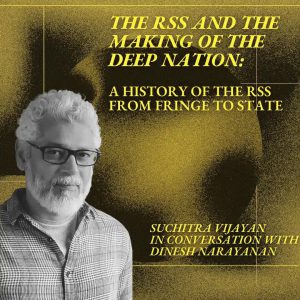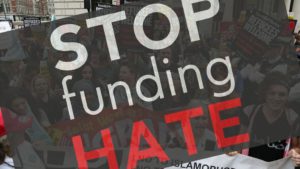
India’s tendency towards the expansion of democracy coexisted with all these extraordinary powers that the Indian State used right from the beginning – A conversation with Gyan Prakash.
By Suchitra Vijayan
June 26, 2020

Indian Prime Minister Indira Gandhi declared the “Emergency” on 25 June 1975. This is often referred to as a “dark…
Suchitra Vijayan is the author of the critically acclaimed book Midnight’s Borders: A People’s History of Modern India (Melville
House, New York) and How Long Can the Moon Be Caged? Voices of Indian Political Prisoners (Pluto Press). She is an award-winning photographer and the founder and executive director of the Polis Project, a New York-based magazine of dissent. She teaches at NYU Gallatin and Columbia University, and is the Chairperson of the International Human Rights Committee.
Her essays, photographs, and interviews have appeared in The Washington Post, GQ, The Nation, The Boston Review, Foreign Policy, Lit Hub, Rumpus, Electric Literature, NPR, NBC, Time, and BBC. As an attorney, she worked for the United Nations war crimes tribunals in Yugoslavia and Rwanda before co-founding the Resettlement Legal Aid Project in Cairo for Iraqi refugees.
SUPPORT US
We like bringing the stories that don’t get told to you. For that, we need your support. However small, we would appreciate it.
Suchitra Vijayan is the author of the critically acclaimed book Midnight's Borders: A People's History of Modern India (Melville
House, New York) and How Long Can the Moon Be Caged? Voices of Indian Political Prisoners (Pluto Press). She is an award-winning photographer and the founder and executive director of the Polis Project, a New York-based magazine of dissent. She teaches at NYU Gallatin and Columbia University, and is the Chairperson of the International Human Rights Committee.
Her essays, photographs, and interviews have appeared in The Washington Post, GQ, The Nation, The Boston Review, Foreign Policy, Lit Hub, Rumpus, Electric Literature, NPR, NBC, Time, and BBC. As an attorney, she worked for the United Nations war crimes tribunals in Yugoslavia and Rwanda before co-founding the Resettlement Legal Aid Project in Cairo for Iraqi refugees.
Related Posts
- Conversations
India’s tendency towards the expansion of democracy coexisted with all these extraordinary powers that the Indian State used right from the beginning – A conversation with Gyan Prakash.

Suchitra Vijayan is the author of the critically acclaimed book Midnight's Borders: A People's History of Modern India (Melville
House, New York) and How Long Can the Moon Be Caged? Voices of Indian Political Prisoners (Pluto Press). She is an award-winning photographer and the founder and executive director of the Polis Project, a New York-based magazine of dissent. She teaches at NYU Gallatin and Columbia University, and is the Chairperson of the International Human Rights Committee.
Her essays, photographs, and interviews have appeared in The Washington Post, GQ, The Nation, The Boston Review, Foreign Policy, Lit Hub, Rumpus, Electric Literature, NPR, NBC, Time, and BBC. As an attorney, she worked for the United Nations war crimes tribunals in Yugoslavia and Rwanda before co-founding the Resettlement Legal Aid Project in Cairo for Iraqi refugees.




